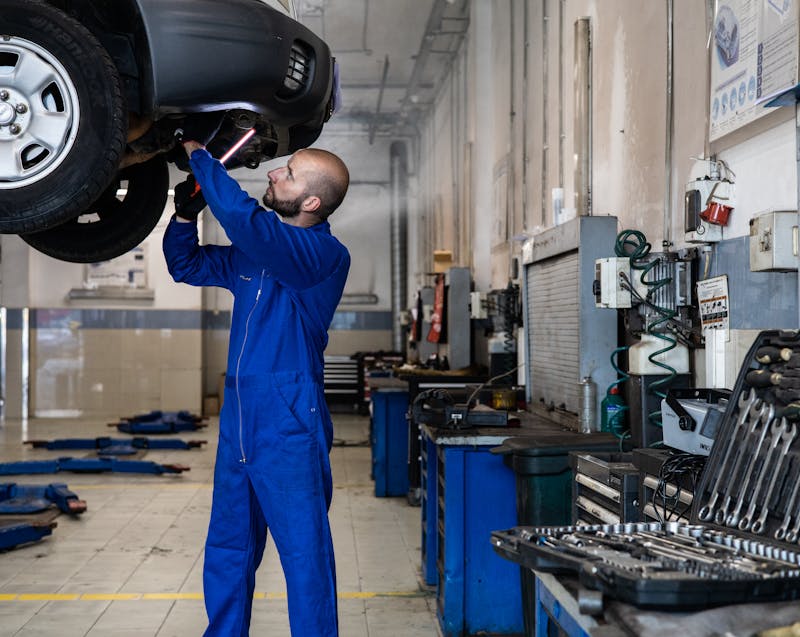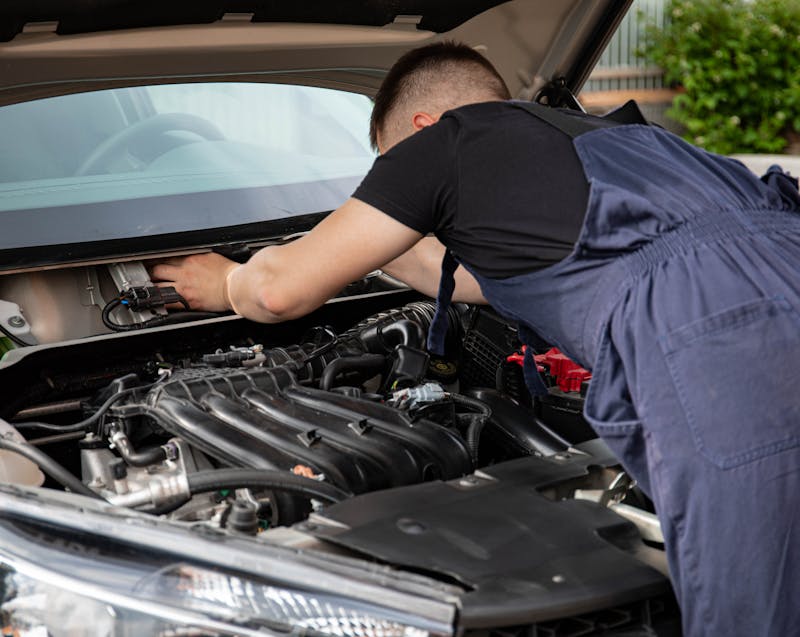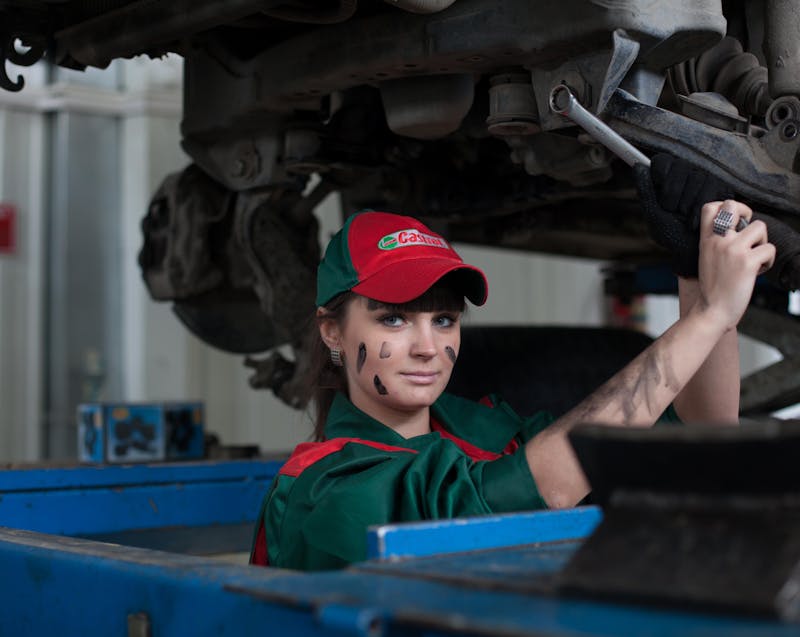

- Auto repair includes both preventive maintenance and corrective fixes that keep vehicles safe, efficient, and reliable.
- Routine maintenance (oil changes, brake checks, tire rotations) prevents costly repairs and extends vehicle lifespan.
- Recognizing early warning signs like noises, leaks, or dashboard lights helps avoid major breakdowns.
- Some simple tasks can be done DIY, but complex repairs should always be left to certified mechanics.
- Repair costs vary widely, but preventive care and choosing a trustworthy shop reduce long-term expenses.
- Technology in modern vehicles has made diagnostics faster and more accurate, improving transparency for car owners.
Owning a car brings freedom, convenience, and independence, but it also comes with responsibility. Vehicles require proper care to stay safe, reliable, and efficient on the road. One of the most important aspects of car ownership is understanding auto repair and car maintenance. Many drivers know they need to visit the shop when something feels off, but they may not fully understand what auto repair involves, why it matters, or how to manage it effectively.
This beginner’s guide will walk you through the essentials of auto repair and maintenance, covering common services, preventive care, costs, and how to choose the right repair shop. Whether you just bought your first car or want to better care for your vehicle, this guide will help you navigate the world of auto repair with confidence.
What Is Auto Repair?
Auto repair is the process of diagnosing, fixing, and maintaining vehicles to ensure they operate safely and efficiently. It includes everything from small jobs like replacing worn-out wiper blades to complex repairs such as rebuilding a transmission or replacing a blown head gasket. At its core, auto repair ensures your car stays reliable, extends its lifespan, and prevents costly breakdowns on the road.
Most drivers encounter auto repair in two main ways: preventive maintenance and corrective repair. Preventive maintenance involves routine tasks such as oil changes, tire rotations, and brake inspections that keep your car running smoothly. Corrective repair, on the other hand, happens when something goes wrong, like a failed alternator, worn brake pads, or an overheating engine.
By learning the basics of auto repair, car owners can make better decisions about when to handle small jobs themselves and when to leave them to a professional mechanic.
Why Is Auto Repair Important for Car Owners?
Auto repair isn’t just about fixing problems after they happen—it’s also about keeping your car safe and avoiding bigger expenses down the road. Vehicles are complex machines made up of thousands of interconnected parts. When one component fails, it can affect other systems, leading to larger and more expensive issues if ignored.
Proper auto repair ensures:
- Safety on the road – Brakes, tires, and steering systems must function properly to prevent accidents.
- Cost savings – Regular maintenance prevents major repairs, which can cost thousands of dollars.
- Fuel efficiency – A well-maintained engine and clean filters improve gas mileage.
- Longevity – Cars that receive proper care last significantly longer than neglected ones.
- Resale value – Keeping repair records and maintaining your vehicle boosts its value when it’s time to sell.
For car owners, understanding why auto repair matters is the first step in creating a responsible car maintenance routine.
The Difference Between Auto Repair and Auto Maintenance
Many people confuse auto repair with maintenance, but they serve different purposes. Understanding the distinction helps car owners know what kind of service their vehicle needs.
- Auto Maintenance
- Preventive and routine.
- Includes oil changes, tire balancing, fluid checks, and brake inspections.
- Keeps your car running smoothly and reduces the risk of breakdowns.
- Auto Repair
- Fixes issues after they occur.
- Involves replacing or repairing malfunctioning parts such as batteries, transmissions, or fuel pumps.
- Ensures your vehicle returns to safe and reliable operation.
Think of maintenance as regular doctor checkups and repair as medical treatment after you get sick. Both are essential, but preventive maintenance helps you avoid emergencies.
Common Types of Auto Repair Services

Every car owner will encounter some type of auto repair at one point or another. While some repairs are minor and inexpensive, others can be complex and costly. Knowing what to expect can help you prepare for common services.
Here are the most common auto repair services:
- Oil and Filter Changes
- Keeps the engine lubricated.
- Typically needed every 5,000–7,500 miles.
- Brake Repair
- Replacing worn brake pads or rotors.
- Critical for safe stopping power.
- Tire Services
- Rotations, balancing, and replacements.
- Ensures traction and fuel efficiency.
- Battery Replacement
- Average lifespan: 3–5 years.
- Essential for starting and powering electrical systems.
- Engine Diagnostics and Repair
- Addresses issues like misfires, overheating, or strange noises.
- May involve replacing spark plugs, belts, or sensors.
- Transmission Repair
- Can include fluid changes, repairs, or complete replacement.
- One of the most expensive repairs if neglected.
- Exhaust and Emissions Repair
- Involves catalytic converter or muffler replacement.
- Ensures compliance with emission standards.
- Air Conditioning and Heating Repair
- Keeps the cabin comfortable in all weather conditions.
By recognizing these services, you can spot potential issues early and keep your car in good condition.
How to Spot Signs Your Car Needs Repair
Catching problems early is one of the best ways to save money on auto repair. Vehicles often show warning signs before a breakdown occurs. Car owners who learn to recognize these symptoms can address issues before they get worse.
Watch out for these signs:
- Unusual noises (grinding, squealing, knocking).
- Warning lights on the dashboard.
- Strange smells (burning oil, gasoline, or rotten eggs).
- Difficulty starting the engine.
- Vibrations or pulling while driving.
- Reduced fuel efficiency.
- Smoke from the exhaust.
- Fluid leaks under the car.
If you notice any of these red flags, it’s best to schedule an inspection with a trusted mechanic immediately.
Can You Do Auto Repair Yourself?
Many car owners wonder whether they should attempt repairs on their own or rely on a professional mechanic. The answer depends on your skill level, the complexity of the repair, and the tools required.
DIY Repairs You Can Handle:
- Changing wiper blades.
- Replacing air filters.
- Checking and topping off fluids.
- Changing a flat tire.
- Replacing headlights or taillights.
Repairs Best Left to Professionals:
- Transmission and engine work.
- Electrical system repairs.
- Brake system replacements.
- Suspension repairs.
- Airbag or safety system work.
While DIY repairs save money, incorrect repairs can cause further damage or compromise safety. Always know your limits and don’t hesitate to seek professional help.
How Much Does Auto Repair Cost?
Costs vary widely depending on the type of repair, the make and model of your vehicle, and where you live. Auto repair shops often charge by the hour, plus parts. According to industry data, the average hourly labor rate ranges from $75 to $150.
Common repair cost estimates:
- Oil change: $50–$100
- Brake pad replacement: $150–$300 per axle
- Battery replacement: $100–$250
- Alternator replacement: $400–$800
- Transmission replacement: $3,000–$7,000
To save money, compare prices between shops, ask about warranties on parts and labor, and stay on top of preventive maintenance to avoid major repairs.
Choosing the Right Auto Repair Shop

Selecting a reliable repair shop is one of the most important decisions a car owner can make. A trustworthy shop not only fixes your car but also helps you avoid unnecessary expenses.
Tips for finding a good auto repair shop:
- Check certifications – Look for ASE (Automotive Service Excellence) certified mechanics.
- Read reviews – Customer experiences give insight into quality and honesty.
- Ask about warranties – A good shop will stand behind its work.
- Compare pricing – Avoid shops that refuse to give estimates.
- Look for specialization – Some shops specialize in certain makes and models.
- Test with small jobs first – Start with routine services before trusting them with major repairs.
Building a relationship with a reliable mechanic saves you time, money, and stress in the long run.
Preventive Maintenance: The Key to Fewer Repairs
One of the most effective ways to reduce the need for auto repair is preventive maintenance. By following a regular maintenance schedule, car owners can prevent small issues from turning into major problems.
Essential preventive maintenance tasks include:
- Oil and filter changes every 5,000–7,500 miles.
- Tire rotations every 6,000–8,000 miles.
- Brake inspections annually or every 12,000 miles.
- Coolant flush every 30,000 miles.
- Transmission fluid check every 30,000–60,000 miles.
- Battery testing annually after 3 years.
- Replacing timing belts every 60,000–100,000 miles.
Most manufacturers provide a maintenance schedule in the owner’s manual, which serves as the best guideline for keeping your car in shape.
The Role of Technology in Modern Auto Repair
Auto repair has evolved dramatically over the years thanks to advancements in technology. Today’s vehicles come equipped with onboard computers, sensors, and diagnostic systems that help mechanics pinpoint issues faster.
Modern auto repair technologies include:
- OBD-II scanners – Read error codes from your car’s computer.
- Digital inspection tools – Allow mechanics to share photos and videos of issues.
- Automated service reminders – Help drivers stay on schedule with maintenance.
- Hybrid and electric vehicle tools – Specialized equipment for high-voltage systems.
Technology not only improves accuracy but also gives car owners more transparency when understanding what repairs are needed.
Final Thoughts: Taking Control of Auto Repair
For car owners, learning what auto repair involves is about more than just fixing problems—it’s about becoming a proactive vehicle owner. By understanding the basics of preventive maintenance, recognizing warning signs, and choosing a trustworthy shop, you can extend your car’s life, save money, and drive with peace of mind.
Auto repair doesn’t have to be intimidating. With the right knowledge, even beginners can confidently manage their vehicle’s care and avoid unnecessary stress.